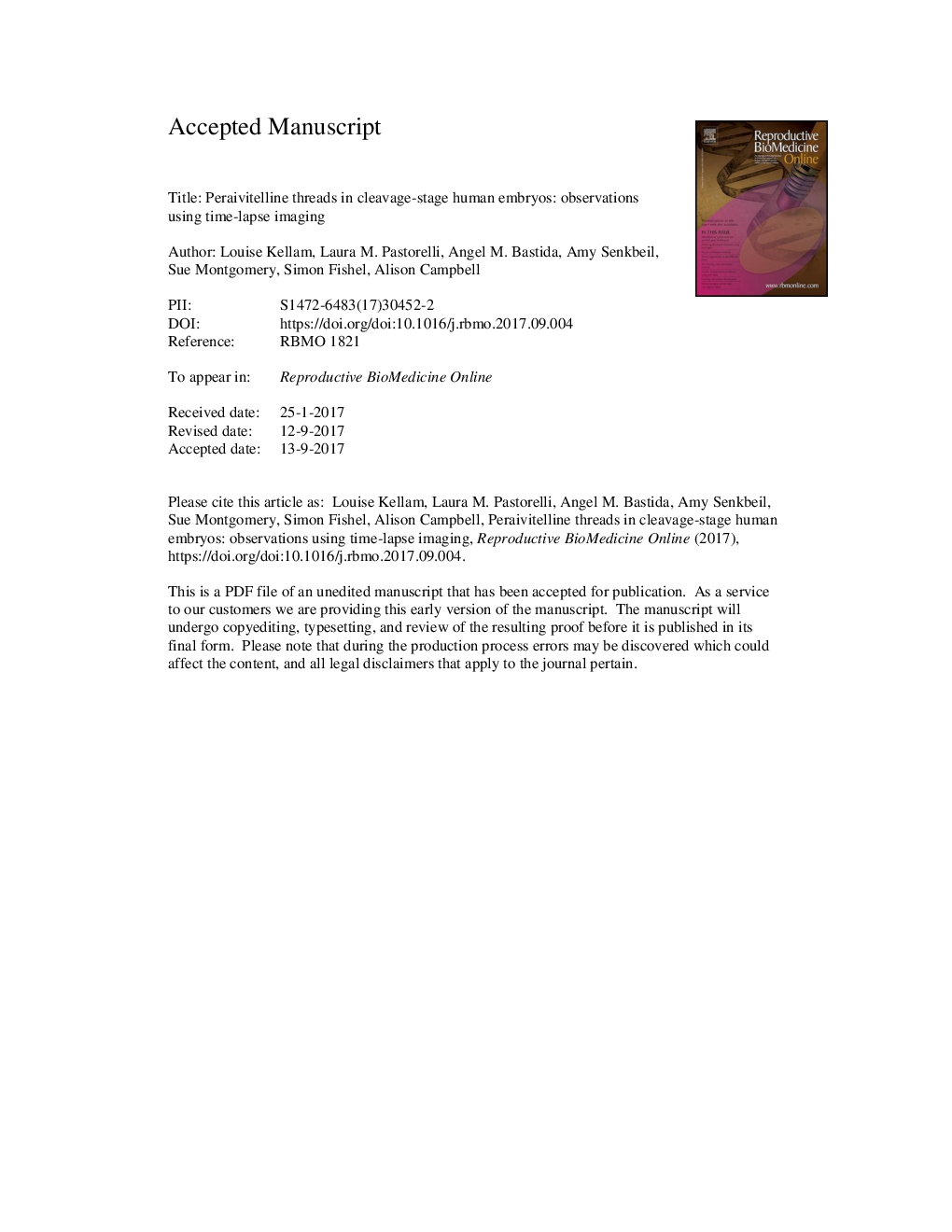| Article ID | Journal | Published Year | Pages | File Type |
|---|---|---|---|---|
| 8784116 | Reproductive BioMedicine Online | 2017 | 43 Pages |
Abstract
Time-lapse imaging of the human preimplantation embryo in vitro has revealed a transient phenomenon involving the appearance of perivitelline threads, commonly observed at the two-cell stage. These threads span the perivitelline space, arising at the specific area where the cytoplasmic membrane contacts the zona pellucida, before any perivitelline space is formed. The threads persist as the cytoplasmic membrane retracts from the zona pellucida to form the first cleavage furrow. In this observational report, these structures and their incidence are described. A total of 834 time-lapse videos from IVF treatment cycles, one per patient, were retrospectively analysed for perivitelline threads, from pronuclear formation until completion of the first cell cycle. Threads were observed in 56.4% (470/834) of embryos and varied from a single to an array spanning an area of the zona pellcida. A total of 91.9% (432/470) were seen to form after cytoplasmic membrane-zona-pellucida contact. A total of 76.4% (359/470) were visible at the first cleavage furrow; 77% (362/470) were associated with cytoplasmic fragments at the two-cell-stage. Presence or absence of threads did not affect embryo development. This descriptive study is limited; further characterization of these structures is needed to elucidate their potential role in early human embryo development.
Related Topics
Health Sciences
Medicine and Dentistry
Obstetrics, Gynecology and Women's Health
Authors
Louise Kellam, Laura M. Pastorelli, Angel M. Bastida, Amy Senkbeil, Sue Montgomery, Simon Fishel, Alison Campbell,
